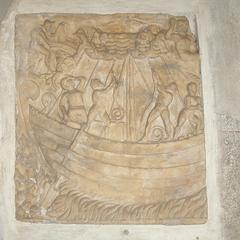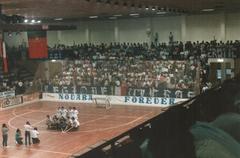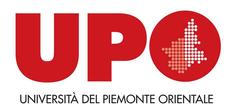
Monument To The Fallen, Novara, Italy: Visiting Hours, Tickets, and Travel Guide
Date: 03/07/2025
Introduction
The Monument To The Fallen (Monumento ai Caduti) stands as a profound testament to the sacrifices made by soldiers from Novara and beyond in Italy’s major conflicts, particularly those of the 19th and 20th centuries. Located in Piazza Martiri della Libertà and the Bicocca district, this war memorial merges significant historical narrative with striking Neo-Classical architecture and deep cultural symbolism. The monument is renowned for its rare pyramid design, allegorical sculptures, and evocative artistic elements, serving as both a place of remembrance and a focal point for community reflection. This guide offers a comprehensive overview of the monument’s history, architectural highlights, visitor information, and tips for making the most of your visit (Novara Tourism Website; Monument To The Fallen Information Page; Italy Heritage; NowJourney).
Contents Overview
- Introduction: Why Visit the Monument To The Fallen in Novara?
- Location and How to Get There
- Opening Hours and Admission
- Historical Context and Significance
- Architectural Highlights and Symbolism
- Visitor Information and Tips
- Nearby Attractions
- Social and Cultural Impact
- Frequently Asked Questions (FAQ)
- Conclusion and Call to Action
- Sources and Official Links
Why Visit the Monument To The Fallen in Novara?
Visiting the Monument To The Fallen provides a meaningful encounter with Italy’s heritage of sacrifice, unity, and reconciliation. The site’s solemn purpose is complemented by its unique pyramid architecture, allegorical sculptures, and the blending of national and local symbolism. Whether you are drawn by historical interest, cultural exploration, or personal reflection, the monument offers an enriching experience at the heart of Novara.
Location and How to Get There
- Address: Piazza Martiri della Libertà / Bicocca district, Novara, Italy
- Access: Easily reachable by public transport, on foot from Novara’s major attractions (including the Cathedral and Basilica of San Gaudenzio), or by car with ample parking nearby.
- Public Transport: Novara’s railway station is less than a 15-minute walk away, with local buses serving the area (Italy This Way).
Visiting Hours and Admission
- Exterior Access: Open year-round, 24/7. Recommended to visit during daylight for safety and full appreciation of the monument.
- Interior Ossuary: Open for guided tours and special events, typically from April to October. Booking in advance is advised.
- Admission: Free to the exterior. Guided interior tours may require a small fee (approx. €5 per person).
- Accessibility: The site is wheelchair accessible with paved paths and ramps. Some interior spaces may have limited access—contact ahead for specific needs.
Historical Context
The Monument To The Fallen in Novara (also known as the Ossuary of Bicocca or the Pyramid of Novara) was inaugurated in 1879 and commemorates the soldiers who fell in the Battle of Novara (March 23, 1849) as well as subsequent conflicts through World War II. It embodies Italy’s tradition of honoring war casualties and reflects themes of national identity, local memory, and the pursuit of peace. The inclusion of both Italian and Austrian soldiers in the ossuary underscores the monument’s message of reconciliation (NowJourney).
Architectural Design and Symbolism
Pyramid Form and Structure
- Design: Conceived by architect Luigi Broggi, the monument’s 12-meter-square base rises to 16 meters, inspired by ancient Egyptian funerary architecture and symbolizing eternity (italytime.net; Atlas Obscura).
- Materials: Built of Sarnico hard stone, chosen for its durability and symbolism of permanence (totalmilitaryinsight.com).
Key Features
- White Marble Cross: Near the summit, symbolizing sacrifice and purity.
- Bronze Eagle with Crowns: Over the entrance, representing valor and unity. The two crowns signify the coming together of Italian and Austrian fallen (Atlas Obscura).
- Ossuary Chamber: The entrance leads to a chamber with the remains of Italian and Austrian soldiers. Engraved gun-howitzer barrels serve as memorial plaques (a-novara.it).
- Bronze Triptych: By Carlo Cantoni (1910), depicting Charles Albert of Piedmont and Generals Perrone and Passalacqua.
Symbolism
- Pyramid: Universality and transcendence, representing the enduring memory of the fallen.
- Eagle and Crowns: Reconciliation and shared humanity.
- Materials: Stone and bronze evoke strength, solemnity, and artistic restraint.
- Inscriptions: Personalize the cost of conflict and invite collective remembrance (totalmilitaryinsight.com).
Visitor Information and Practical Tips
- Best Time to Visit: Spring and autumn offer pleasant weather and fewer crowds. Early morning or late afternoon provides optimal lighting for photography (Weather25).
- Dress Code: Modest attire is recommended out of respect.
- Photography: Permitted outdoors; discreet during ceremonies.
- Guided Tours: Available by appointment through local tourism offices; check for special events on national holidays.
- Amenities: Nearby cafés, shops, and public facilities; benches for rest and contemplation.
- Safety: Novara is generally safe, but exercise usual precautions in crowded areas.
Nearby Historical Sites and Attractions
- Basilica of San Gaudenzio: Noted for its 122-meter dome by Antonelli (Italy This Way).
- Novara Cathedral (Duomo) & Baptistry: Renaissance and ancient architecture in Piazza della Repubblica.
- Broletto Complex: Civic Museum, Gallery of Modern Art, and Natural History Museum (Summer in Italy).
- Piazza Martiri della Libertà: Central square with historic monuments.
- Piazza Cesare Battisti (Piazza delle Erbe): Historic market area.
- Day Trips: Orta San Giulio, Arona (Lake Maggiore), Vigevano, Casale Monferrato, and Sacro Monte di Orta (Komoot).
Social and Cultural Impact
The monument is integral to Novara’s social and civic life, acting as the site for ceremonies on Liberation Day (April 25), Republic Day (June 2), and other commemorative occasions. Schools and veterans’ associations regularly organize educational visits, keeping memory and civic values alive. The monument also serves as a platform for peace initiatives, interfaith dialogues, and cultural events (NowJourney; iliveitaly.it).
Frequently Asked Questions (FAQ)
Q: Is there an entrance fee to visit the Monument To The Fallen?
A: No, visiting the exterior is free. Interior tours require a small fee and advance booking.
Q: What are the visiting hours?
A: The exterior is accessible 24/7; interior ossuary visits are seasonal and by appointment.
Q: Are guided tours available?
A: Yes, contact the local tourism office for bookings, especially for groups and during commemorative events.
Q: Is the monument wheelchair accessible?
A: Yes, the exterior is fully accessible; interior access may be limited.
Q: Can I take photographs?
A: Yes, photography is allowed outside; be respectful at all times.
Visuals and Interactive Media
Consider including high-quality images with descriptive alt text such as “Monument To The Fallen Novara facade” and “Visitors at Monument To The Fallen Novara.” Embed an interactive map showing the monument’s location and proximity to other attractions.
Conclusion and Call to Action
The Monument To The Fallen is more than a historical landmark—it is a living symbol of remembrance, unity, and peace at the heart of Novara. Its unique architecture, evocative symbolism, and role in community life make it an essential stop for any visitor. Whether you come for reflection, education, or photography, the monument offers a meaningful experience within Novara’s rich cultural landscape.
For the latest visitor information, guided tour schedules, and event updates, download the Audiala app or follow Novara’s official tourism channels. Plan your visit today and immerse yourself in Italy’s enduring heritage.
Sources and Official Links
- Novara Tourism Website
- Monument To The Fallen - Novara Information Page
- Italy Heritage: War Memorials
- Italy’s Historical Battlefields and War Memorials – nowjourney.com
- A Travel Guide to World War II Sites in Italy – iliveitaly.it
- Atlas Obscura: The Ossuary of Bicocca, Novara
- Italy This Way: Novara
- Summer in Italy: Novara Guide
- Komoot: Attractions in Novara
- Weather25: Novara July Weather
- The Travel Folk: Italy in July




